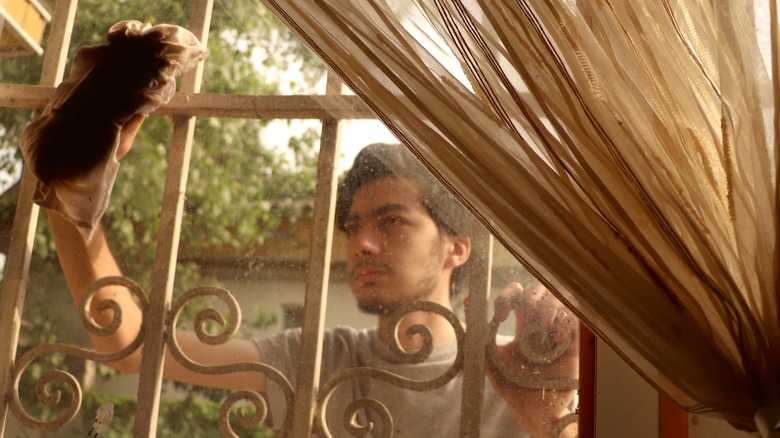Where Did 'Spring Cleaning' Come From And Why Do We Still Do It Today?
The minimalism movement continues to trend, with certain studies showing decluttering positively affects mental health as it creates a more focused lifestyle. Unfortunately, most of us are guilty of looking around our homes and asking ourselves how we acquired so much stuff, when was the last time we used something, and why we have yet to get rid of certain mainstays. Spring cleaning walked so minimalism could run.
The refreshing sunshine after winter has passed and the delightful sight of flowers blooming always mark the perfect time to pack up things we no longer need and haul them to the nearest Goodwill. We can then begin the annual deep scrubbing of our homes, entering the new season with a feeling of serenity.
So where did this notion of spring cleaning come from, and why not winter or summer cleaning? Spring cleaning stems from other cultures worldwide that entered Western practice. For many of these cultures, their new year isn't in December but in the early months following winter, directly influencing why we all go into a cleaning frenzy every spring.
Where spring cleaning is derived from
While forms of spring cleaning exist in many places worldwide, the practice can be traced back to prominent Persian, Jewish, and Chinese traditions. In Iran, the new year falls on the day of the vernal equinox, March 21st. Many Iranians dedicate time throughout their two-week-long celebration of renewal by burning old things and growing new things. Part of this path of optimism and exhilarating change includes thoroughly cleaning their homes in preparation for the new year.
Jewish culture sees a version of spring cleaning when Passover approaches in April. To symbolize the obstacles overcome in Egypt, many Jewish households remove all traces of bread — even crumbs — from their homes during Passover, cleaning every corner and crevice of the house. Like Iranian culture, the Chinese perform house cleansing in preparation for their new year in February. Removing dust and grime ahead of the new year ensures no afflictions would follow them into a new phase of their lives. As such, no sweeping is executed for a few days once the initial cleaning has been completed in an effort not to risk sweeping away any of the good luck entering the home with the new year.
Spring cleaning in Western society
In the West, spring cleaning is seen as early as the 19th century and was a mainstream custom by the 1970s, with the New York Times having article archives on the lively tradition from as early as 1978. When we consider why this has become such a common practice for Americans today, many believe it boils down to simply being within our human nature and positively affecting our mental well-being. With winter being a season of short-lived days and dreary weather, our bodies release much more natural melatonin than they do when exposed to more sunlight. Thus, when spring approaches and the sun begins to shine much longer, our bodies come out of hibernation, and we suddenly have newfound energy to conquer an untidy house.
A decluttered and polished home improves our focus, uplifts our moods, diminishes our stress, and may even benefit our physical health. In addition, deep cleaning removes allergens and pollutants from our spaces, such as dust, pollen, and pet dander. There truly is a mind and body connection, and it keeps this spring cleaning ritual alive in not only Western society but cultures all around the globe.


